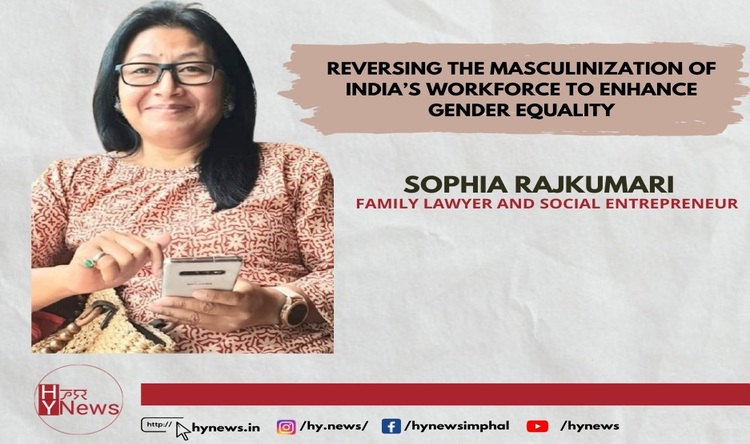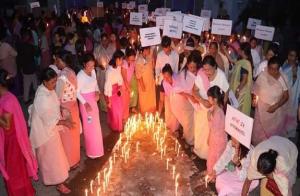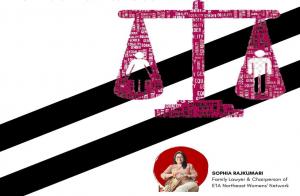REVERSING THE MASCULINIZATION OF INDIA’S WORKFORCE TO ENHANCE GENDER EQUALITY

Sophia Rk
As India’s economy stalls and its erstwhile rapid growth slows, another disturbing trend has become apparent – the falling proportion of women in India’s workforce. An article published in the Mint newspaper last year provided an instructive overview of these growing problems. It pointed out that India’s Female Labour Force Participation Rate (LFPR)—the share of working-age women who report either being employed or being available for work—has fallen to a historic low of 23.3% in 2017-18, meaning that over three out of four women over the age of 15 in India are neither working nor seeking work. It also revealed that just nine countries around the world, including Syria and Iraq, now have a fewer proportion of working women than India.
If things continue as they are, any hope of narrowing the gender gap and achieving equality will remain a distant pipe dream. There can be no equality without women being economically empowered and independent. Thus, urgent policy measures are needed to reverse the masculinization of India’s workforce and enhance India’s female LFPR. There is a second issue as well – the gender wage gap – with male salaried employees earning 1.2 to 1.3 times what their female counterparts earn. That needs to be addressed as well, but the immediate priority ought to be increasing the female LFPR.
As we develop policy prescriptions, we need to remember that the problem is not uniform – southern Indian states have relatively higher levels of female LFPR, as do Meghalaya, Mizoram, and Manipur in the North East. Thus, there is a social aspect that is contributing to lowering the female LFPR. Additionally, a large part of India’s workforce is in the unorganized sector – which would be harder to motivate from a policy standpoint than the organized sector. However, a beginning needs to be made somewhere, and thus the organized sector is a good place to start.
Labor reforms
The first step needs to be to enhance the share of the organized sector as an overall employer and to incentivize more businesses currently in the unorganized sector to become part of the formal sector. Two key barriers need to be tackled to enable this from the labor standpoint. The first is the lack of a simple and uniform hire and fire norm that makes it very difficult and expensive for an employer to reduce its workforce during economic adversity, leading to reluctance in hiring and reliance on contractual labor to meet short-term needs. This greatly disadvantages women, who desire more stable and predictable employment due to family and childcare responsibilities and social constraints. Thus, providing employers a more flexible framework to easily enhance and reduce their workforce will go a long way in widening formal employment in a manner that is advantageous to women.
A second barrier to growing the formal sector is the cost and difficulty of complying with multiple labor laws and regulations and the accompanying inspector raj and harassment. Thus, a simplified labor code with a single annual online return with automated and online audits would help employers from ease of compliance perspective and make it easier for them to formally grow their workforce.
Thirdly, we need to question whether welfare legislation intended to enhance women’s welfare is actually proving to be burdensome on employers and thus serving to dis-incentivize the employment of women. A good example of this is the Maternity Benefits Act, which was recently amended to hike the paid maternity leave period from 90 days to 180 days, and also mandates the provision of crèche facilities. In theory, this is a welcome move to help new mothers and ensure proper childcare. However, few employers want or can afford to keep female employees on the payroll for 6 months without actual work or provide expensive dedicated crèche facilities. Given a choice, many employers would opt for male employees for this reason alone. Thus, alternatives need to be considered – including paying maternity benefits through social security or insurance structure based on uniform employee and employer contributions covering the entire workforce (akin to Provident Fund) so that employers are not burdened with the same.
Similarly, employers should not have to face restrictions on women’s working hours or take special measures to ensure the security and transport of women working night shifts any more than male employees. Providing proper transportation infrastructure and adequate security outside of the workplace is the prerogative of the state, and it should not abdicate that responsibility by seeking to shift the same to employers.
Tax incentives
Coupled with labor reforms, policymakers also need to seriously think about significant and distinct tax incentives – both for employers and employees – to reward higher levels of female LFPR. These can include:
• A discounted corporate tax rate for employers with a greater proportion of female workers. The higher the ratio of women workers, the greater the discount.
• Enterprises with a high proportion of women employees and/or women owners/promoters who are willing to go through periodic certification audits to verify genuineness should also be provided indirect tax benefits – lower GST on products and service output, as well as input credits and lower customs duties on imports – to make them more competitive in comparison with organizations that have a larger proportion of males in their workforce or are largely male-owned or promoted.
• Executives and board members – both male and female – at enterprises that meet female LFPR targets set by the government should also be provided incentives in the form of lower personal income tax rates and other forms of social recognition – such as the use of priority lanes at airports and so on.
Persuasion works better than force, and policy measures that make it easier for employers to increase their female workforce and incentivize them to do so are the need of the hour. While this alone will not be enough and broader social and educational change is also needed, it will certainly go a long way in reversing India’s declining female LFPR.
Disclaimer: The "opinions expressed" here are the writer's own and not that of the media house.
For submission of "your opinions" please write to us at [email protected]




































Leave Comments